Far Out Space Station Concepts by NASA (Gallery)
Artist's Conception of Space Station Freedom
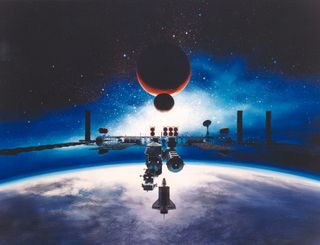
Alan Chinchar's 1991 rendition of the Space Station Freedom in orbit. The painting depicts the completed space station. Earth is used as the image's backdrop with the Moon and Mars off in the distance. Freedom was to be a permanently crewed orbiting base to be completed in the mid 1990's. It was to have a crew of 4. Freedom was an attempt at international cooperation that attempted to incorporate the technological and economic assistance, of the United States, Canada, Japan, and nine European nations. The image shows four pressurized modules (three laboratories and a habitat module) and six large solar arrays which were expected to generate 56,000 watts of electricity for both scientific experiments and the daily operation of the station. Space Station Freedom never came to fruition. Instead, in 1993, the original partners, as well as Russia, pooled their resources to create the International Space Station.
2001:A Space Odyssey Space Station
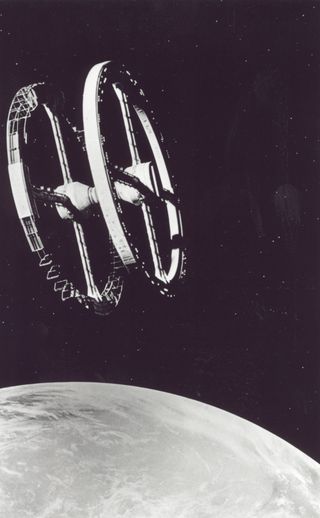
This the classic space station image from the movie 2001:A Space Odyssey, directed by Stanley Kubrick in 1968. Praised for its special effects, the movie based its space station concept on Wernher Von Braun's model. Kubrick's station in the movie was 900 feet in diameter, orbited 200 miles above Earth, and was home to an international contingent of scientists, passengers, and bureaucrats.
Proposed USAF Manned Orbiting Laboratory
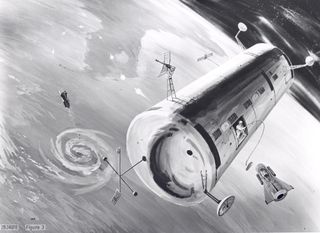
A 1960 concept image of the United States Air Force's proposed Manned Orbiting Laboratory (MOL) that was intended to test the military usefulness of having humans in orbit. The station's baseline configuration was that of a two-person Gemini B spacecraft that could be attached to a laboratory vehicle. The structure was planned to launch onboard a Titan IIIC rocket. The station would be used for a month and then the astronauts could return to the Gemini capsule for transport back to Earth. The first launch of the MOL was scheduled for December 15, 1969, but was then pushed back to the fall of 1971. The program was cancelled by Defense Secretary Melvin R. Laird in 1969 after the estimated cost of the program had risen in excess of $3 billion, and had already spent $1.3 billion. Some of the military astronauts selected for the program then transferred to NASA and became some of the first people to fly the Space Shuttle, including Richard Truly, who later became the NASA Administrator.
Spider Space Station Concept
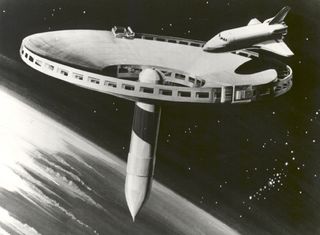
A 1977 concept drawing for a space station. Known as the "spider" concept, this station was designed to use Space Shuttle hardware. A solar array was to be unwound from the exhausted main fuel tank. The structure could then be formed and assembled in one operation. The main engine tank would then be used as a space operations control center, a Shuttle astronaut crew habitat, and a space operations focal point for missions to the Moon and Mars.
Roof Space Station Concept
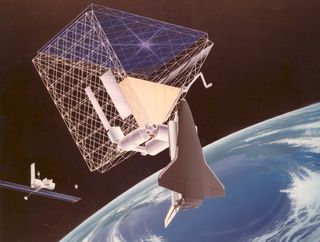
This is the Johnson Space Center's 1984 "roof" concept for a space station. The "roof" was covered with solar array cells, that were to generate about 120 kilowatts of electricity. Within the V-shaped beams there would be five modules for living, laboratory space, and external areas for instruments and other facilities.
Skylab Concept by George Mueller
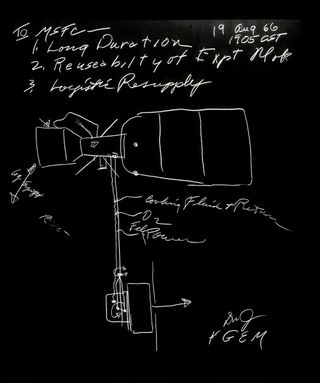
This is a sketch of Skylab, as drawn by George E. Mueller, NASA associate administrator for Manned Space Flight. This concept drawing was created at a meeting at the Marshall Space Flight Center on August 19, 1966. The image details the station's major elements. In 1970, the station became known as Skylab. Three manned Skylab missions (Skylab 2 in May 1973; Skylab 3 in July 1973; and Skylab 4 in November 1973) were flown on which experiments were conducted in:space science, earth resources, life sciences, space technology, and student projects.
Brick Moon Space Station Concept
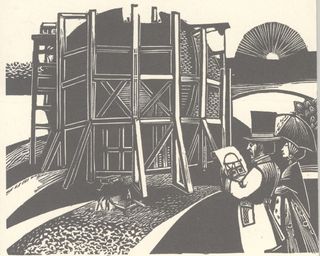
This is an artist's impression of the "Brick Moon." "The Brick Moon" was the title of an article published in the Atlantic Monthly by Edward Everett Hale in 1869. This piece was the first known proposal for an Earth-orbiting satellite. Hale envisioned that the satellite could be used by mariners as a navigational aid. He believed it would be the longitudinal companion to the latitudinal North Star. In 1869, this story was considered fantasy but in retrospect "The Brick Moon" foreshadowed the need for a space station and some of its technologies.
Get the Space.com Newsletter
Breaking space news, the latest updates on rocket launches, skywatching events and more!
Noordung's Three-Unit Space Station Concept
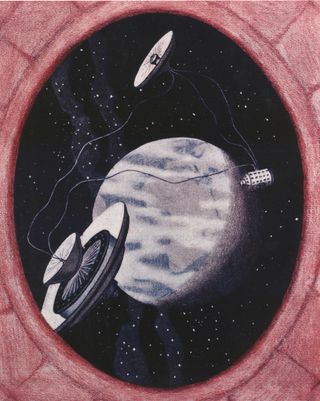
This 1929 Hermann Noordung image depicts a three-unit space station as seen from a space ship. Hermann Potocnik (1892-1929), also known as Herman Noordung, created the first detailed technical drawings of a space station. The three units were the habitat, the machine room, and the observatory, each connected by an umbilical. The Earth is in the background, approximately 26,000 miles away. The station in this image is roughly above Cameroon's southern tip, in a geosynchronous orbit on the median of Berlin.
Noordung's Space Station Habitat Wheel
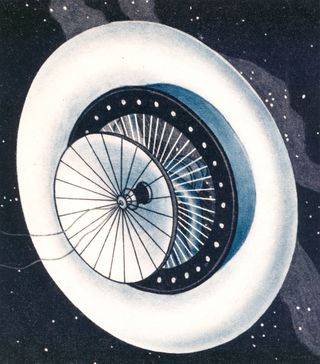
1929 Hermann Noordung depiction of a space station habitat wheel. Hermann Potocnik (1892-1929), also known as Herman Noordung, created the first detailed technical drawings of a space station. Power was generated by collecting sunlight through the concave mirror in the center. This was one of three components of Noordung's space station. The other two were the observatory and the machine room, each connected to the habitat by an umbilical.
Three-Radial-Module Space Station Concept
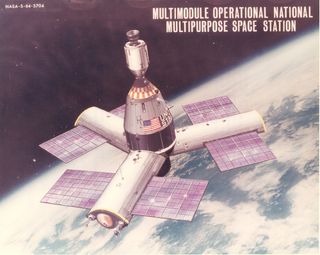
This three-radial-module space station concept was intended to utilize Apollo hardware to deploy the station and to transfer crews to and from orbit.
Artificial Gravity Space Station
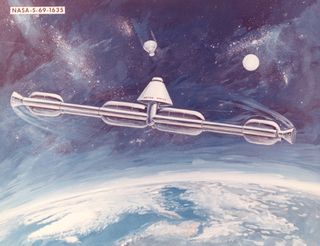
A 1969 station concept. The station was to rotate on its central axis to produce artificial gravity. The majority of early space station concepts created artificial gravity one way or another in order to simulate a more natural or familiar environment for the health of the astronauts. After returning micro-gravity environment, astronauts find their muscles weak because they have not been using them. Long-term exposure to micro-gravity could generate long-term health problems for astronauts who do not utilize their muscles. This is why there are exercise machines on space shuttles and on the International Space Station. It was to be assembled on-orbit from spent Apollo program stages.
Join our Space Forums to keep talking space on the latest missions, night sky and more! And if you have a news tip, correction or comment, let us know at: community@space.com.

Space.com is the premier source of space exploration, innovation and astronomy news, chronicling (and celebrating) humanity's ongoing expansion across the final frontier. Originally founded in 1999, Space.com is, and always has been, the passion of writers and editors who are space fans and also trained journalists. Our current news team consists of Editor-in-Chief Tariq Malik; Editor Hanneke Weitering, Senior Space Writer Mike Wall; Senior Writer Meghan Bartels; Senior Writer Chelsea Gohd, Senior Writer Tereza Pultarova and Staff Writer Alexander Cox, focusing on e-commerce. Senior Producer Steve Spaleta oversees our space videos, with Diana Whitcroft as our Social Media Editor.